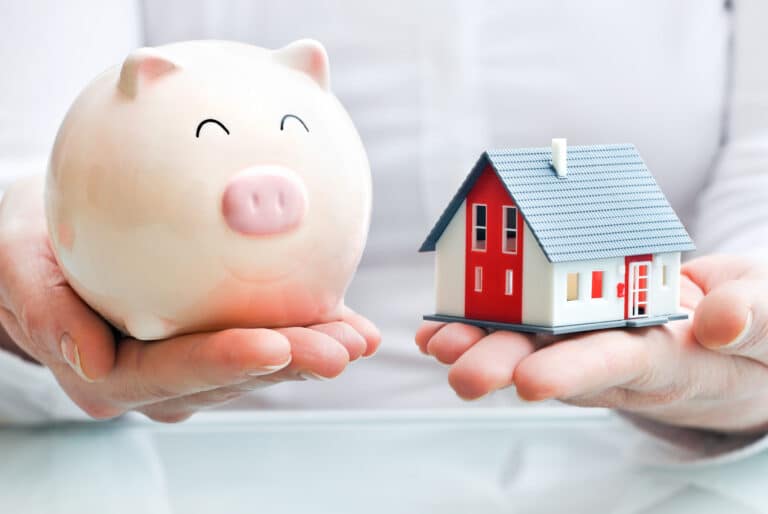
Investing in real estate is a safe method to accumulate wealth. Obtaining a mortgage loan is the most popular way to become a homeowner Private mortgage insurance (PMI) is a costly expense for some homebuyers (PMI). A piggyback loan may seem enticing, but there are many factors to consider.
PIP Loans Defined
To comprehend a piggyback loan, one must first comprehend a second mortgage. A second mortgage is a subordinate loan to a first mortgage. So, if someone has two mortgages on a house they wish to sell, the first mortgage is paid off before the second. Typically, homeowners take for a second mortgage to pay off credit card debt or other financial hardships. Piggyback loans, or 80/10/10 loans, are unique.
Borrowers who want to avoid paying PMI, paying higher interest rates, or taking out jumbo loans typically take out a piggyback loan. The initial mortgage will normally cover 80% of the purchase price with no private mortgage insurance. The piggyback mortgage covers 10% of the purchase price and is usually a home equity line of credit (HELOC). The remaining 10% is paid in cash by the borrower.
Things To Think About Before A Piggyback Loan
Like other financial choices, the best option depends on your present financial situation and your aspirations. Consider the benefits and drawbacks of piggyback loans.
The Benefits Of Piggyback Loans
A piggyback loan is often used to avoid paying private mortgage insurance (PMI), which protects the lender against default. Two mortgages are cheaper for the homeowner and the interest is generally deductible. Before making a major financial decision, consult your tax expert. A piggyback loan is often used to avoid paying private mortgage insurance (PMI), which protects the lender against default. Two mortgages are cheaper for the homeowner and the interest is generally deductible. Before making a major financial decision, consult your tax expert. You may lawfully request your lender to stop paying PMI if you have 20% equity or more in your property. Otherwise, the lender must cancel PMI when you achieve 22% equity in your property.
Affordability
It may also be used to finance over 80% of a home’s buying price (also referred to as 80 percent loan-to-value or LTV). For example, a buyer with just 5% down may receive an 80/15/5. 80 refers to the initial mortgage, which covers the first 80% of the home’s cost. An additional 15% of the purchase price is financed by a second mortgage. The “5” represents the 5% down payment. A second mortgage covering the remainder of the purchase price without a down payment is allowed by certain lenders.
Convenience
Since it closes at the same time, piggyback loans are convenient for buyers. So you don’t have to attend two closings and sign two sets of documents. They may propose another lender if your original lender doesn’t provide piggyback loans, again for your convenience. A second loan might sometimes be designed to benefit the homeowner. This second loan may be used for many purposes, such as house upgrades. They may also be set up to accept solely interest. For a certain amount of time, you just pay interest, but you may add as much principle as you like. It provides homeowners more options with their money. They may invest money in their 401(k), pay off high-interest credit card debt, save for a rainy day, etc.
High-Interest Jumbo-Loan Rate
If you want a more costly property, you may be able to sidestep jumbo loan constraints. Assume your local rules restrict lending to $500,000. To buy a $600,000 property, you need to pay $60,000 down. Instead of a high-interest jumbo loan, the borrower may take out a $40,000 piggyback loan to pay the difference. Your first mortgage will be cheaper.
Piggyback Loans Cons
On the other hand, there are several disadvantages to piggyback loans. Some examples:
- Because second mortgages are linked to short-term interest rates, they often cost more than first mortgages. These rates may eventually offset the expense of PMI.
- Higher monthly payments: Second mortgages are normally only used for principal homes and have shorter loan terms. Pay larger monthly payments and live in a certain style of home
- They are likewise restricted to $100,000. But some lenders accept more. Others, like Rocket Mortgage®, do not.
In Brief
Getting a piggyback loan has several advantages, but it is ultimately up to you. Taking out a piggyback loan might put a burden on your credit lines, so be sure the savings are worth it. If you’re determined to avoid PMI, look at lower-cost homes or down-payment aid programs. A piggyback loan may be required if you are purchasing a property.